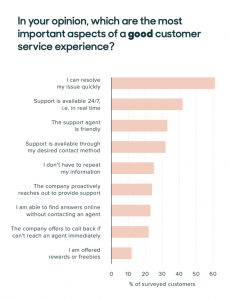Advancements and Diverse Applications of AI Voice Generators
In recent years, the advancement of Artificial Intelligence (AI) has led to remarkable breakthroughs in various fields, with AI voice generators emerging as a particularly impactful innovation. These sophisticated systems have transcended their initial capabilities, revolutionizing communication and finding diverse applications across industries.
Advancement of AI Voice Generators:
AI voice generators, also known as text-to-speech (TTS) systems, have undergone significant advancements propelled by deep learning algorithms and neural network architectures. These advancements have enabled AI voice generators to produce remarkably natural-sounding speech with nuances resembling human intonation, rhythm, and emotion.
Moreover, the evolution of AI voice generator has addressed many previous limitations, such as robotic or monotonous speech patterns, resulting in more lifelike and engaging audio outputs. With the ability to learn from vast amounts of data, these systems continually refine their speech synthesis capabilities, achieving unprecedented levels of accuracy and realism.
Uses of AI Voice Generators Across Industries:
- Accessibility and Inclusivity: AI voice generators play a crucial role in making digital content accessible to individuals with visual impairments, dyslexia, or other reading difficulties. By converting text-based content into audio format, these systems ensure inclusivity and equal access to information for all users.
- Content Creation and Marketing: Content creators, marketers, and publishers leverage AI voice generators to produce audio versions of articles, blogs, e-books, and marketing materials. By offering auditory content, businesses can cater to diverse audience preferences and enhance user engagement.
- Multimedia Production: In the entertainment industry, AI voice generator streamline the production of multimedia content, including animations, video games, and podcasts. These systems provide realistic voice overs for characters, narration, and interactive dialogue, enhancing the immersive experience for audiences.
- Virtual Assistants and Customer Service: Virtual assistants, chatbots, and customer service platforms integrate AI voice generator to deliver personalized and natural-sounding responses to user queries. Whether it’s scheduling appointments, answering inquiries, or providing product recommendations, AI voice-enabled assistants enhance the user experience and streamline interactions.
- Language Learning and Education: AI voice generator facilitate language learning and education by offering pronunciation practice, language immersion, and interactive dialogue simulations. These systems provide learners with authentic audio materials and enable personalized learning experiences tailored to individual proficiency levels.
- Assistive Technologies: AI voice generator power assistive technologies, such as voice-enabled navigation systems, screen readers, and voice-controlled devices. These technologies empower individuals with disabilities to navigate digital interfaces, access information, and perform everyday tasks independently.
Conclusion:
The advancement and widespread adoption of AI voice generators have transformed the way we communicate, consume content, and interact with technology. From enhancing accessibility and inclusivity to revolutionizing content creation and customer service, the applications of AI voice generators are diverse and far-reaching. As these systems continue to evolve, they hold the promise of further enriching human-machine interactions and driving innovation across industries.
In summary, AI voice generator represent a significant advancement in AI technology, offering immense potential to improve various aspects of our lives and reshape the future of communication.
For additional information or our services, contact use today CLICK HERE
Checkout this link for additional link for more information CLICK HERE



